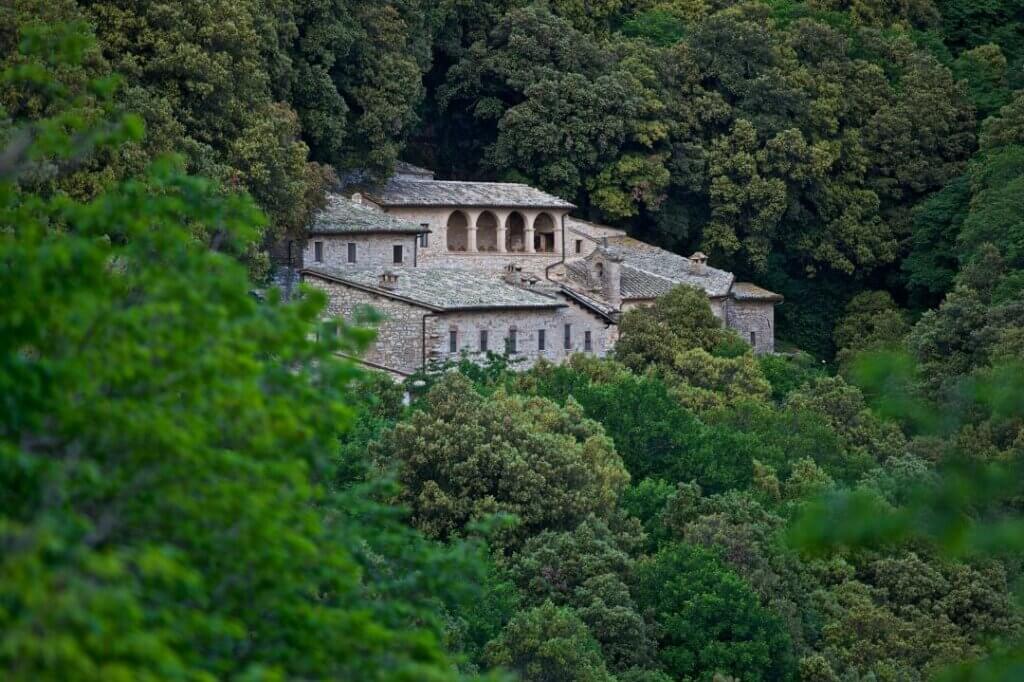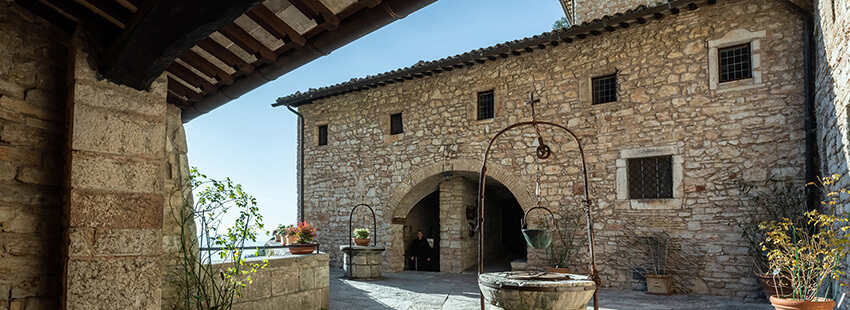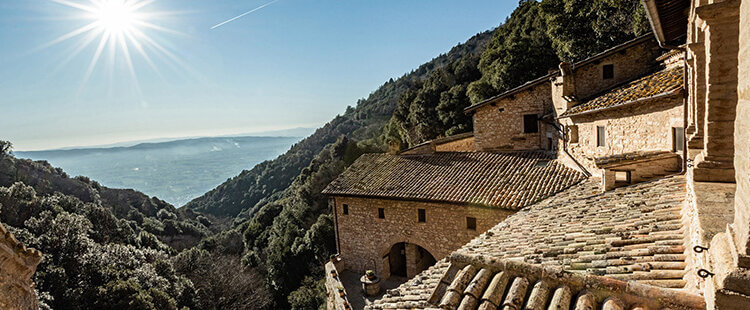Due to its rugged terrain, medieval hill towns and dense forests, Umbria is called the “green heart” of the country. Although, it borders Tuscany, Lazio and the Marche, the region remains still, for many, undiscovered.
Eremo delle Carceri
Not far from Assisi, surrounding a cave where St. Francis loved to retire in prayer and immersed in the nature of Mount Subasio, you will find the Eremo delle Carceri, recognized by UNESCO as a World Heritage Site. A very small primitive church, a monastery expanded over the centuries with a well in the middle of the courtyard whose water would have gushed out due to a miracle of the Saint, and the boulevard in the wood where various places of worship tell the story of this hermitage full of spirituality and mysticism.

The Eremo delle Carceri is a fascinating place that can be found partway up Mount Subasio, starting from Assisi. The hermitage is built around a cave where St. Francisco used to take refuge for praying. In 1215 the Benedictines donated this place to him. The hermitage was enlarged from its original architecture by Bernardino da Siena in 1400.
You enter in a small triangular courtyard with a well in its center. The legend narrates that water flowed thanks to a miracle of St. Francis. From the parapet behind you can observe a beautiful view through a gorge that opens onto the plain of Spoleto.
UNESCO World Heritage
The fifteenth century church rises in front of the courtyard; it preserves above the altar a fresco of the Umbrian-Senese school of the mid-15th century (Crucifixion); in the altar stone, another fresco of the 1500s with the coat of arms of the Monti di Pietà; on the back wall is a small fourteenth-century stained-glass window of French production.
Through an iron gate you enter the very small Primitive Church, dedicated to Santa Maria delle Carceri, heart of the Sanctuary, probably a cave adapted as a chapel: at the altar, there is a beautiful fresco, the Madonna with Child and St. Francis, of the sixteenth century, above a thirteenth-century Crucifixion.

Descending to the right through a staircase and tiny doors you enter the Cave of St. Francis, currently divided into two rooms: one contains the bed of stone on which the saint slept; in the other, on the right wall you can see a stone on which probably St. Francis sat to meditate and pray. On the wall that closes the cave, a faded fourteenth-century fresco depicts the traditional episode of the sermon of the birds: legend has it that the birds sat to listen to the saint on the ancient holm oak visible at the bridge thrown over the ditch. A wall covers a crevasse known as the “devil’s hole”, into which the devil is said to have fallen, defeated by the prayers of St. Francis. Next to it there is also the “dry ditch”, to whose waters the saint asked not to disturb with their gurgling the prayers of the friars.
Following the path you reach a bridge, at the end of which there is a bronze with St. Francis releasing the turtledoves, by Vincenzo Rosignoli. The “viale di San Francesco” begins, an evocative woodland walk where there are various places of devotion. Among these, the Cave of the Blessed Leo, which is accessed by a stepped path, the caves of Blessed Bernard of Quintavalle, Blessed Egidio, the Blessed Sylvester and, a little further away, the Blessed Andrea da Spello. Following the bridge, you can climb to the chapel of Santa Maria Maddalena, where the blessed Barnaba Manassei, creator and founder of the Monti di Pietà, has been buried since 1477.
Assisi and Perugia make perfect basis to explore Eremo delle Carceri and its surrounding places.



